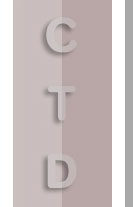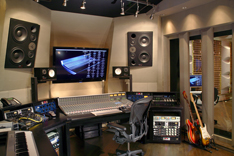

Dark Acoustic Mythology
By Carl Tatz
I am presenting a list of some of the erroneous notions that have kept this technology from being as widely implemented, as it deserves. Hopefully they can be laid to rest.
Accurate Monitors Cannot Sound Good
The notion that in order to create good mixes, speakers have to sound bad so that the engineer will be "tricked" into emphasizing certain frequencies and de-emphasizing others based on some unknowable and unexpressed standard dating back to the Ming dynasty must be retired here and now. Your first clue when identifying a properly set up and tuned monitor system is that it sounds great. Really great.
Subwoofers Cause Mixes To Be Bass Shy
I love this one. Certainly the sub levels can be set too high and of course that would cause you to mix thin but that is not what we’re talking about here. Our intention is to use high-resolution measurements that allow us to fine tune low frequency information in a way that would be impossible to do by ear alone. Virtually all home systems have subwoofers now days, some of which go down to 30Hz or even 20 Hz. Your near-fields roll off big time after about 50Hz or 40Hz. Sure there’s some 30Hz or so there but it is greatly attenuated by then. The consequence of this for a mixer is that you may miss a guitar player’s foot tap or some low frequency rumble from a passing truck or thunder. This has all been documented many times in real life situations and we’ve all heard it before but there is another far more profound reason for using subwoofers and it has to do with what I use as my definition of a control room – A space dedicated to the faithful reproduction of sound. This includes low frequency too. Why would you want anything less?
My Speakers Are Flat And Don’t Need EQ
This one was pretty much covered in the article “Home Studio Epiphany”. They are not flat because the room greatly affects their performance. See article
Hell Hath No Fury Like A Women Scorned
She’ll get over it sooner or later just like we guys do.
Low Frequency Reproduction
Is Limited
To Your Room’s Longest Dimension
Well then how did we get a 25Hz reading in a 10’x12’ room that calculates only down to 44Hz? Easy. It’s a little acoustic law called room gain and states that when the wavelength of low frequency output of your system significantly exceeds the dimensions of your room, the room becomes pressurized and you are effectively in the near field of those frequencies. Translated this means that if your monitoring system is capable of producing 20Hz then you will hear 20Hz, room size not withstanding. (Think of a car or headphones for that matter) However, you will still need to deal with the room’s modal problems.
The Mixes Sounded Great
And We
Hardly Had To Do Anything To Them
A mastering engineer’s job is to make your mixes shine. If they do not have shine potential, it makes it a lot more difficult for him or her to succeed. There are more bad sounding CDs out there now then there have ever been because of affordable technology and unfortunately the mastering engineer is not always the guy who will tell you that your mixes are less than stellar. He wants your business so in exchange for that you should demand that he tells you the truth. Having a great monitoring system can go a long way in making both of you look better.
You Can Tune Your Monitors By Ear
Obviously we all do this all the time if we’re moving from studio to studio. We’ll have our little spots on the console meter bridge for monitor placement and set their cant by eye. If we’re lucky, it might sound OK but again, without a little bit of science, that decision may be based on some unknown appealing curve that may very well be lying to us and is different in every room. Some of us may even note that we’ve been mixing this way for years and haven’t had any problems and made some great sounding records so what’s the big deal? It’s interesting, that with some very notable exceptions, the records that we all deemed great sounding sonically at one time in the past, don’t really hold up to what we consider state of the art today. Could part of it be that the speakers are better? As my colleague, the great George Massenburg, once said when presented with the argument that there are a lot of bad sounding records out there that are selling millions and the record labels don’t seem to care anymore, his heartfelt reply was " We do it for ourselves…we do it for ourselves". If any of us feel that we’ve reached the pinnacle of our abilities and couldn’t possibly improve, then this information can be ignored. But for most of us, wouldn’t it be fascinating and at the very least enjoyable, to see how using a really accurate monitoring system on a regular basis in our home studios might influence our work. In a perfect world, all studios would have a recallable preset for a variety of near-field/subwoofer monitoring systems that could accommodate engineer’s preferences. We have the technology folks. Think how a savvy studio could market this as a perk to their clients.
Carl Tatz Design: 6666 Brookmont Terrace, Suite 1109, Nashville, TN 37205, 615.354.6242 / carl@carltatzdesign.com









